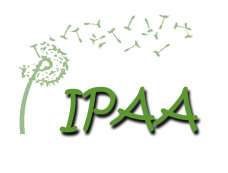NEWS!
RSV SEASON IS UPON US
General Information and Misinformation about RSV
RSV stands for Respiratory Syncytial Virus, which is a common virus causing respiratory problems. It has a strong seasonal pattern and comes in force typically from mid December until April every year. Each yearly pattern is different and may start a little earlier or later, end a little early or later and may have bad years, or not so bad years. Even outside of the typical season, there are strains of RSV in small numbers circulating through the community.
Despite common beliefs, all children get RSV. It is estimated that 70% will have it before their first birthday, and nearly 100% by the age of 2. We all get it over and over again, but it is the first time that causes the worst infection. It is estimated that as adults, we average getting RSV every 3 years.
For most children, it is nothing more than a bad cold and it remains in the upper respiratory tract. Approximately 10% of those children getting RSV for the first time have lower respiratory tract infection and get bronchiolitis from it. “-itis” means inflammation so bronchiolitis means inflammation of the small airways. It is a little misleading because it starts in the upper airway and ends in the small airways in the chest. Patients who get RSV bronchiolitis will also have conjunctivitis (pink eye), rhinitis (nose), pharyngitis (throat), laryngitis (voice box), tracheitis (main windpipe) and bronchitis (large airway) symptoms to a variable extent.
Symptoms of bronchiolitis include cough, wheezing and increased work of breathing, in fact very closely mimics an asthma flare because it involves the same airways. Different patients may have more or less of any of those symptoms.
The higher risk patients are those that are very young (under 2 months of age), those who have underlying premature lung disease or other underlying conditions effecting the heart or lungs. The rule of 10’s for RSV is fairly close to reality: 10% of patients get bronchiolitis, 10% of those end up in the doctor’s office, 10% of those end up in the hospital and 10% of those end up in the ICU. While it is a small percentage, it is of the entire population so makes up a significant number.
In bronchiolitis, the RSV actually travels down to the lower respiratory tract and damages them directly. In asthma the infections are usually limited to the upper airway, however the lower respiratory tract can become inflamed if chemical signals are sent by the upper airway and trigger the sensitive airways in the chest.
There is a lot of argument whether bronchiolitis responds to asthma medicines, but clearly not as well as in asthma patients. There really is no other medicine used that will likely have a significant impact in RSV bronchiolitis, so otherwise the treatment is just supportive if they don’t respond to asthma medicines. Supportive treatment includes saline nasal washes, fever control, maintaining hydration and if needed, oxygen therapy.
To make things even more complicated, since 10% of the entire population get RSV bronchiolitis, 10% of those with asthma will also get bronchiolitis. Since an upper respiratory tract infection can be a potent trigger for asthma, bronchiolitis will certainly make asthma have a bad flare so both will be present at the same time. It also follows that all patients with asthma will have RSV, so when RSV is identified in the upper respiratory tract, it may impossible to tell whether they just have asthma (90% of time) or the combination of asthma and bronchiolitis (10%).
The association of asthma and RSV is well established, though there is no agreement on the specifics of that association. If a patient with asthma gets RSV, they are almost certain to flare. While patients are usually born with the sensitive airways of asthma, RSV may come before they have started showing signs or having flares. In that instance, RSV may be present during the first episode of significant cough or wheeze, though any other bad cold could have done the same thing.
On the other hand, if an RSV infection is severe enough, it could damage the lower airways making them more sensitive for the future, essentially causing asthma. We do know that if you end up in the hospital with RSV bronchiolitis, there is a 50% chance of going on to have asthma. But whether the RSV causes asthma, or whether those with asthma are just more likely to end up in the hospital is not known. It is likely some of both are true.
RSV is coming and with it will come a lot of respiratory problems. For many it will cause cold symptoms, while many will have more significant problems. There is an association with asthma. If there is already been a recurrent pattern of problems, it is likely that there is underlying asthma. But if RSV is associated with first event, it may be impossible to know whether it is asthma, bronchiolitis or both.





